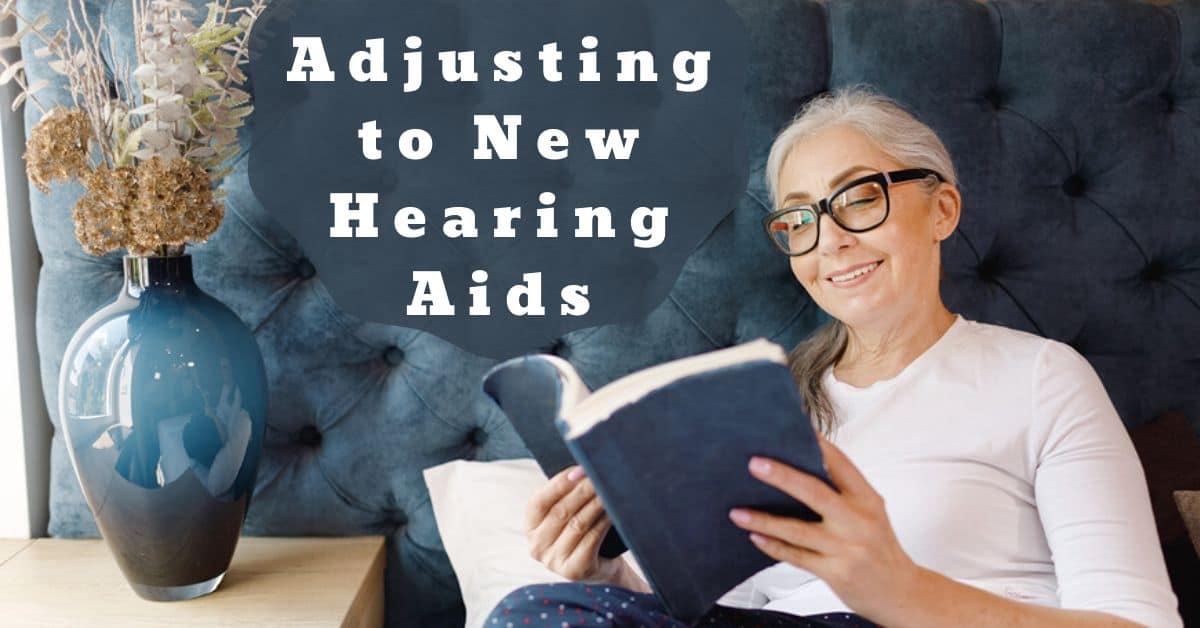You’ve decided to start wearing hearing aids. Congratulations! You are about to experience, once again, the rich tapestry of sounds that weave in and out of our experience moment by moment. If you’ve hit the average, it’s been 7 years since you started noticing hearing loss, and now finally you’re going to hear the world with fresh ears. But imagine rewinding the clock on those 7 years, and maybe even a little further. If you could go back to that time, it might be uncomfortable and unnerving to suddenly hear as well as you did then. That’s kind of what it’s like to put hearing aids in for the first time. It might take some getting used to!
Hearing aids don’t return hearing ability to normal, but they can get very close. It’s possible that you’ve forgotten some of the sounds that once surrounded you, like the buzzing fridge, the chirping birds, the computer fan whirring, the traffic outside, the air conditioner kicking on, etc. You might think, “Why would I want to hear the fridge buzzing?” Getting used to ignoring the sound of the fridge is part of the adjustment process, and the more you stick to your schedule, the sooner they’ll feel normal to wear and start improving your life wherever you go.
Hearing Aids Are Not Like Eyeglasses
When you get new eyeglasses, you put them on and everything looks clearer and sharper. There may be a couple days of readjusting to the way they shift the images as they bring them into focus, but it’s no big deal and it’s always obvious that they’re improving your ability to see. What was blurry is now sharp.
Hearing, on the other hand, is different. The fridge buzz, to return to this example of sound, never became blurry. When your hearing was normal, you learned to “tune it out.” Your brain did the work of deciding that it was not an important sound to focus on and learned to ignore it so thoroughly that you barely noticed it. Then, as you started to lose hearing ability, it drifted away entirely.
Now with your new hearing aids, you can hear the fridge again as though for the first time. It is probably annoying. Your brain needs to relearn to ignore it. The more you use your hearing aids at the outset, the sooner this can happen. You’ll soon learn to focus on the person talking across from you and not on the traffic whizzing by outside. It just takes a little time.
Fitment Is An Ongoing Process
Another thing that makes it more difficult to adjust to hearing aids than to eyeglasses is the fitment process. “Fitment” is what we call the programming process that tunes the hearing aids to your specific needs. As we’ve just gone over, hearing aids will take a while to get used to even if they’re perfectly fitted for you, but how do you know whether they are or not? That’s why it’s important to stay in contact with your hearing healthcare professional as you get used to your hearing aids. By describing your experience in detail to them, they can help determine if the thing bugging you is a normal part of the experience of adjusting to hearing aids, or if there’s something that should be changed about your fitment. In all likelihood, you will need to make a few trips back to the office to have your hearing aids adjusted in the first weeks of wearing them.
Wait a While Before Driving
Because hearing is such an important part of spatial awareness, new hearing aids can be too disorienting to make driving safe at first. Give it a little bit until you’re comfortable moving around with your hearing aids in before you get behind the wheel with them.
Talk to Others
If you know other people who have had hearing aids for a while, ask them what they remember about the process of adjusting to them. Everyone’s experience is different, but they may have some helpful advice or encouraging words.
Get Hearing Tests Regularly
It’s recommended that your hearing be tested at least every 3 years. Your needs for your hearing aids will likely change over time, so be sure to check in and see how your ears are doing.

